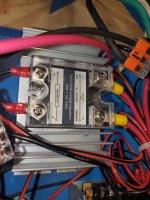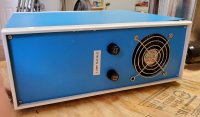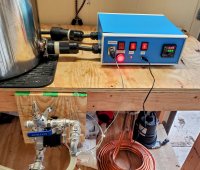I put the controller together, but I need some more help. I'm a physician, not an engineer, so I am always limping my way through these things.
The main power and heating element control, through the DSPR120, are working perfectly. The problem is the pump control. When I connected it per my diagram, I got no power to the pump. I checked the power supply terminals with the multimeter. I got about 120V with each of the power cables connected to the PS, as expected. The ground was connected correctly. However, there was no power across the 24V DC terminals. I then noticed that the red wire from the pump switch was not connected to power. However, when I did connect it, the fuses blew. Why did I have 120V at the red wire terminal on the PS when the red switch wire was not connected to power, and why did it blow the fuses when I did connect it? Also, I assume the PS is bad, since there is no 24V power, correct?
As an option, I'm thinking of eliminating the PS, and going back to a 6-15R. However, the original external PS for that pump only has 2 wires going to the plug. Can I convert this to a 6-15p, and how would I wire that?
Thanks for all your help.










































![Craft A Brew - Safale BE-256 Yeast - Fermentis - Belgian Ale Dry Yeast - For Belgian & Strong Ales - Ingredients for Home Brewing - Beer Making Supplies - [3 Pack]](https://m.media-amazon.com/images/I/51bcKEwQmWL._SL500_.jpg)

























